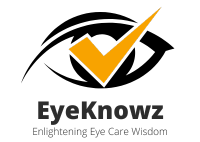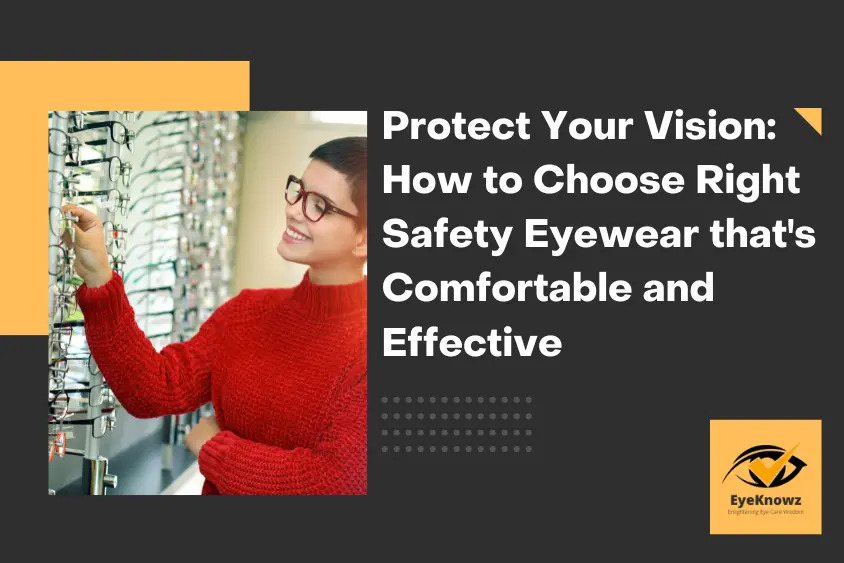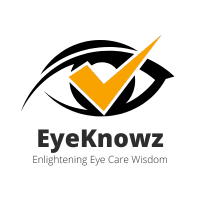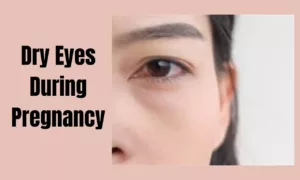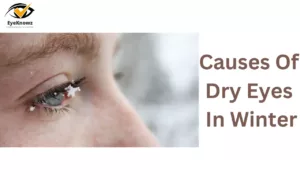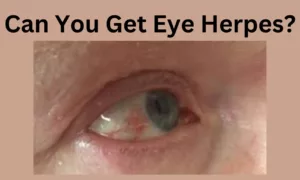Discover how to choose the right safety eyewear for your workplace to ensure safety and peace of mind on the job and protect yourself from hazards.
Safety Eyewear:
Many job sites across the world use safety eyewear as part of their safety programs. You are more likely to suffer an eye injury while working with chemicals, heavy machinery, or contaminated environments. It is a fact that workplace risks are high, and when you work in industries and factories, the risk factor increases even more!
Every day, thousands of workers suffer injuries that aren’t connected to a specific job, field, or hazard. Usually, these injuries are minor and result in only a day or two of missed work, but there are always exceptions, and you should never risk an injury when it is relatively minor. If you wear proper eyewear, you can prevent many eye injuries.
When it comes to eyewear and lens coatings, choosing the right one can make a big difference. As a result, it can potentially improve safety, functionality, comfort, and efficiency.
Causes of Workplace Eye Injuries: Safety Hazards:
Understanding the potential risks to your vision is essential to choosing the right safety eyewear for your job. Objects or particles that strike or scrape the eye most commonly cause eye injuries. Things such as dust, metal slivers, and wood chips can be blown around by the wind or ejected from tools. In addition to low- and high-velocity impacts, heat, chemicals, dust, and optical radiation, many other risks may exist. You can protect yourself from these hazards by wearing eyewear that comes with a variety of features. It is good to start by wearing eye protection against low- and high-velocity impacts, heat, chemicals, dust, and optical radiation, as these are the most common hazards.
Different types of Safety Eyewear:
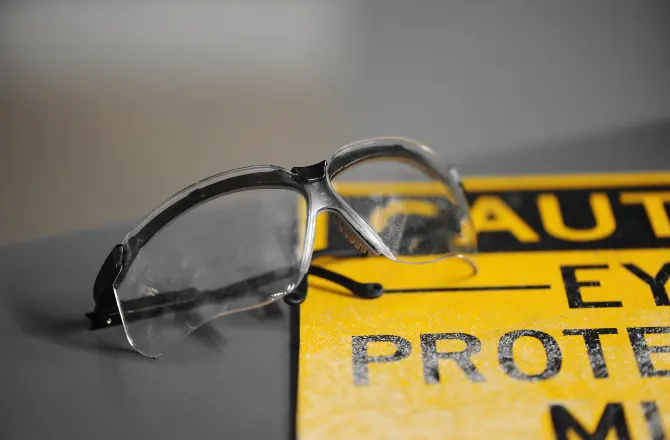
As soon as you have identified the workplace hazards to which you need protection, you need to determine which type of safety coverage you need. Different types of safety glasses are available based on quality, structure, and comfort.
1-Safety Glasses:
The safety eyewear glasses are designed to protect your eyes against flying fragments, objects, large chips, and particles which can cause eye damage. It is common for workers to wear safety glasses, which are intended to protect their eyes from a variety of impacts. Safety glasses may be the right choice for workers exposed to flying objects or particles and do not need a full seal around their eyes.
2- Safety Goggles:
Safety goggles are just as effective when it comes to protecting your eyes from the same types of hazards you find in safety glasses, but they seal around your eyes as well, ensuring full coverage from all angles. By doing so, objects cannot enter under or around the goggles. Safety goggles should be correctly fitted to your face in order to provide a protective seal around your eyes. Goggles that aren’t properly fitted won’t offer the protection you need.
3- Face shields:
Protective wear, such as face shields, is also an option. Face shields alone, however, are ineffective at protecting against impact hazards. Even though face shields must be worn along with safety glasses or goggles, they can provide additional protection since they cover the entire face. Face shields are designed to protect your whole face from impact hazards such as flying fragments.
4- Customized glasses:
Each component is designed in customized glasses according to the wearer’s needs. It could include customized lenses for each eye, a customized structure, a customized material, or a customized thickness for the side sheets.
Make the right choice of lens:
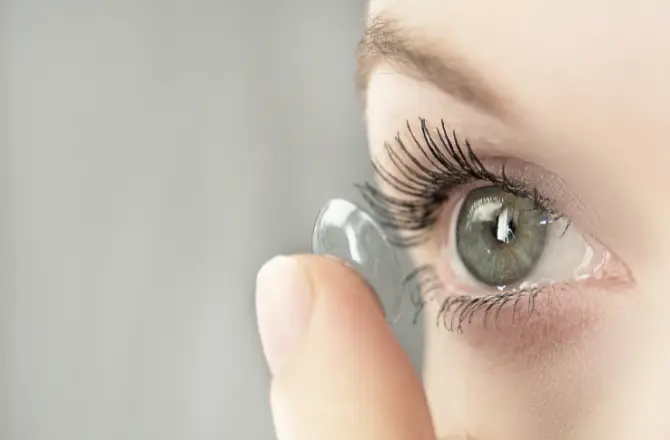
Lens coating and lens color selection are also necessary when choosing safety goggles or glasses. Lenses and coatings come in various types and provide a number of benefits, including:
Anti-fog coating for lenses:
You can use this coating to prevent your eyewear from fogging up while doing work, which can interfere with your vision. The anti-fog coating employed by manufacturers improves the performance of safety glasses by minimizing fogging.
Polarized Lens:
Due to their ability to reduce glare, polarized lenses are ideal for outdoor workers, especially during bright, sunny days.
Blue Lens:
When working in a work environment with an excessive glare as a result of sodium vapour lighting, blue lenses are excellent safety glasses to choose from.
Mirror Coating:
A mirror coating provides additional protection in hot, bright environments. Mirror coatings provide greater comfort and protection for your eyes when exposed to infrared radiation in hot environments. They’re great for outdoor work environments that need sun and glare protection.
A scratch-resistant coating:
Using eyewear coatings that prevent damage to your lenses may be beneficial if you work in an environment that poses a risk of impact hazards. With a scratch-resistant coating, the lens lasts longer and is more clear. Even when protected by a hard coat, safety eyewear is subject to everyday wear and tear. When it becomes scratched or damaged, it needs to be replaced.
Factors to consider for the right Safety Eyewear:
There are certain safety glasses standards that require safety eyewear to meet, as they are intended to protect both the internal and external structures of the eye. Consider these factors when looking for safety eyewear:
- Prescription safety glasses: In addition to your corrective eyewear, cover safety goggles may solve your eyewear needs beyond safety. Alternatively, if cover safety goggles are not an option for you, prescription safety glasses can provide comfort from the impact of hazards and are customized with your prescription.
- Ensure proper fitting: A good fit is essential for a variety of reasons when selecting safety eyewear. To begin with, certain professions are susceptible to potential hazards if you wear loose-fitting glasses. A perfectly fitting lens can protect your eyes from harm and ensure your comfort. You can remain focused on your work with comfortable eyewear without adjusting your glasses frequently, which may expose your eyes to unnecessary risks.
- Design: We all want to look and feel good in our safety eyewear as personal protective equipment. So, choose eyewear that makes you feel confident as well as protected. When dealing with clients or colleagues, you should appear professional and put-together. Choosing a style that suits your features and gives you a feeling of confidence is important.
- Ensure durability: The eyewear we use in the workplace needs to be durable, especially in hazardous environments. The durability of safety glasses is also an important factor to consider. The investment is not worthwhile if the eyewear wears out easily. Safety eyewear will keep your eyes protected for years to come while also saving you money.
- Comfort: Eyewear for safety must be comfortable, without pressure points on the nose bridge, sides of the head, or behind the ear. Choose safety eyewear frames with a combination of soft and hard components for added comfort. Choosing the right pair of safety eyewear for you means finding the right fit, a comfortable weight, and glasses that don’t irritate your eyes.
To sum up:
When choosing occupational safety eyewear, ensuring the highest level of protection against eye injuries is essential. Choosing the right safety glasses can be difficult because so many options are available. We make the process easy by describing protective eyewear by feature, type, and everyday hazards. You can ensure maximum eye protection by understanding the features when purchasing safety eyewear.
FAQs
How to choose the right safety eyewear for work?
You should consider several factors when choosing safety eyewear for work, including specific hazards, the type of work, and comfort. Additionally, look for eyewear that meets relevant safety standards and provides adequate protection against impact, dust, chemicals, and UV radiation.
What are the types of safety glasses?
There are various types of safety glasses designed for specific purposes. Some common types include clear, tinted goggles, prescription, and polarized safety glasses, each suited for specific needs.
How do I choose the best safety prescription sunglasses?
You should prioritize accurate prescription, safety features, a comfortable frame, compliance, and a lens tint suitable for the conditions of your job.
